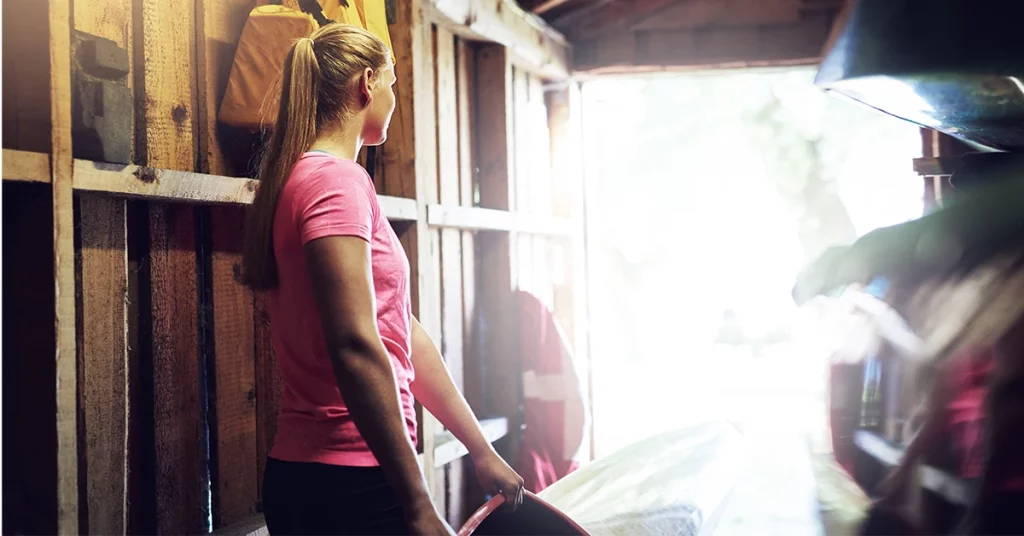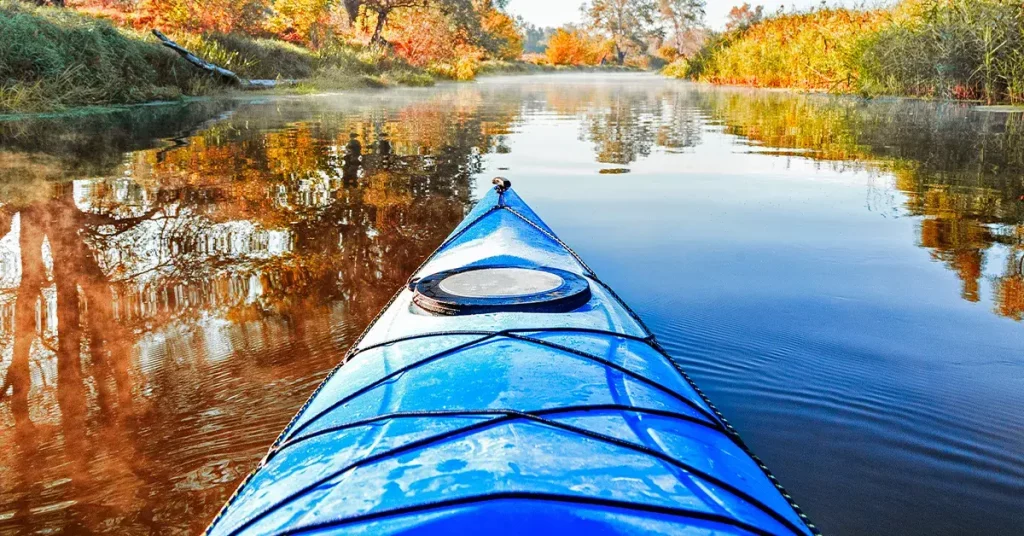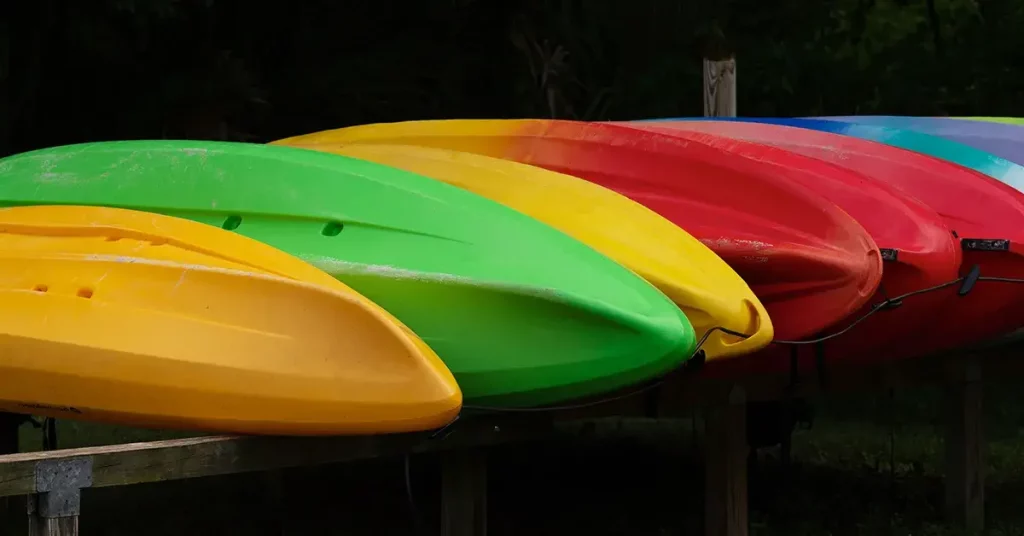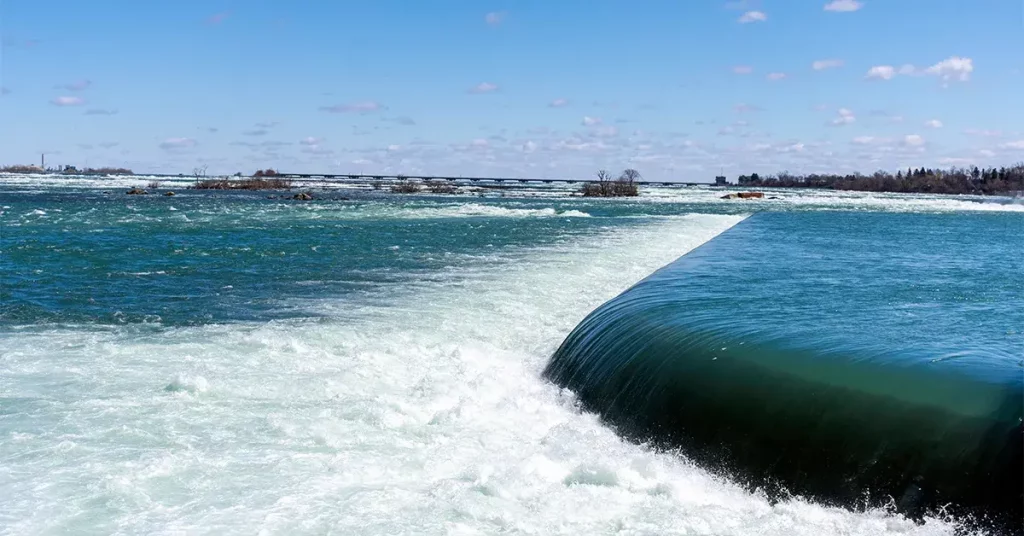Kayaking is one of the most popular pastimes in the United States, with roughly 53 percent of the population enjoying the sport. But once your day is done, where do you store your kayak?
There are plenty of options for kayak storage, from DIY kayak storage to setting up a ceiling rack. Read on for ten kayak storage ideas for your new kayak.
Indoor Storage
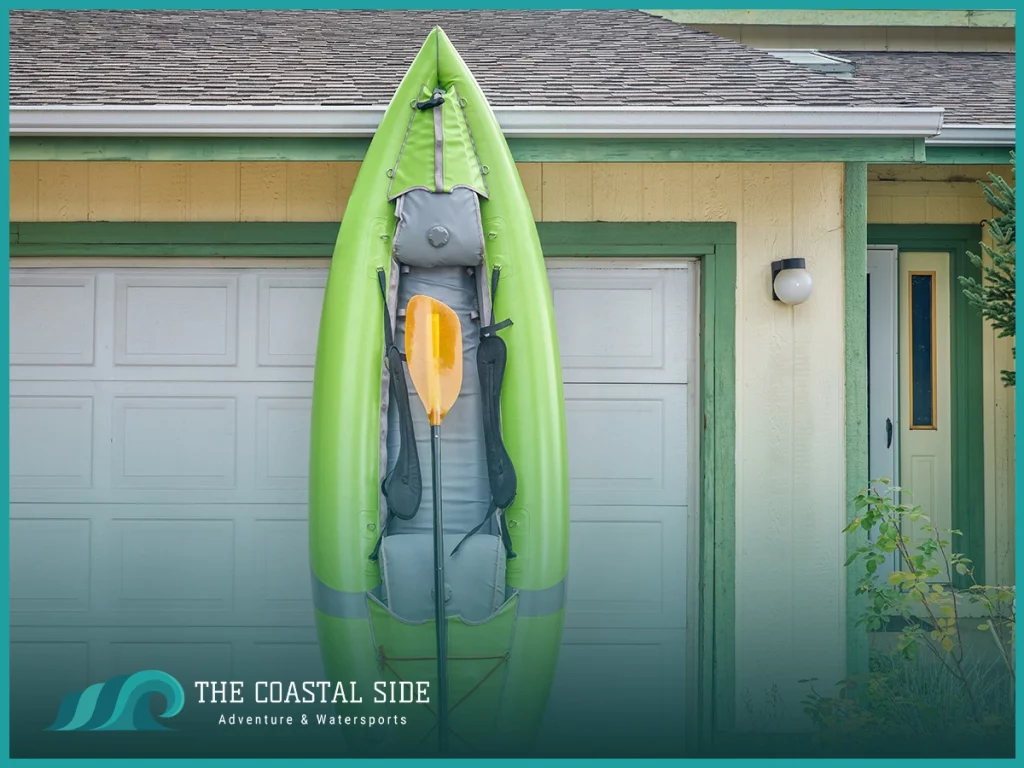
To begin with, let’s look at some of the indoor options. But why should you keep your kayak indoors? Won’t this track water and possibly mud into your home?
You should clean your kayak well after use to ensure that you aren’t letting water set into it, but this is a minor problem. Regular maintenance of your kayak is a must regardless of storage.
By keeping your kayak indoors, you keep it well out of the elements. It’s also safer, in case you’re concerned someone may try to take your kayak. While unlikely, theft isn’t impossible.
It also can make for a decent decorative item in some aesthetics. Sporty, water-based aesthetics may benefit from a kayak on display. Of course, don’t let this stop you from using it!
Ceiling Rack
A ceiling rack is one of the most common methods of indoor kayak storage and a great way to preserve floor space.
Another great benefit of ceiling racks is that they keep your kayaks out of harm’s way. If you store your kayak poorly, you can threaten its safety.
In the case of falling, simply make sure that your kayak is properly secured. You might also want to place it above something that won’t damage – or be damaged by – the kayak if it falls.
If you want to make a DIY kayak hoist, make sure you have enough vertical storage. Leaving the kayak low on its pulley system might cause someone to bump into it, leading to injury.
Wall Rack
Similarly, a kayak wall rack is a great way to store your kayak. Wall racks also aren’t too complicated, making it easy to make some DIY kayak storage.
One thing you’ll want to ensure is proper mounting hardware and safety straps. Poor mounting hardware can cause the kayak to fall from its wall rack.
Additionally, you should use a kayak stand with padded arms. Doing so can prevent scratches or blemishes when removing the kayak from its stand.
A kayak rack should distribute the weight evenly. Doing so can stop a wall-mounted kayak from falling sideways or being damaged at its pressure points.
A wall-mounted kayak rack is safe, easy to use, and simple to install. If you have the wall space for a kayak rack, this is undoubtedly one of the best forms of kayak storage.
Outdoor Shed
Consider some outdoor storage space if you don’t have anywhere indoors to put your kayak. Specifically, you should consider using a shed or other small outdoor storage unit.
This is a great way to have a dedicated area for your kayak without sacrificing home space. In addition, your local hardware store likely carries sheds that you can use easily.
There are drawbacks, though. There is little ceiling space or wall space in an average shed. They also tend to have less room, meant specifically for storage.
Because of this, make sure that you’re getting a shed that can fit your kayaks. For example, you might want one to fit multiple kayak racks or hold up to three kayaks.
A kayak storage shed needs to have enough space for safe, effective kayak storage. Make sure your kayak storage shed is safe, properly secured, and won’t crowd your belongings.
You might also decide to use a secure storage unit for extra security. These are often cost-effective units that you can use for more space at a small fee for long-term storage.
Indoor Garage
If your living space can’t quite accommodate installing a shed, you may have a garage that you can use. A garage is great for vehicles, but they also make for fantastic kayak storage.
Some condominiums or apartment complexes may also rent out individual garages. These are a good place to store your equipment, especially if you otherwise need to navigate stairs.
Your garage is a good place to install kayak storage racks. Without racks, it’s fine to safely store them on the ground or against the wall. Using a wall-mounted rack is another strong idea.
Do your best to ensure that they’re free from hazards. A canoe storage rack can also fit in these garages, making it great to store whichever you aren’t using.
Proper kayak storage means ensuring that they won’t easily fall or endure damage. Renting space can cost quite a bit, but having a personal storage area keeps kayaks safe.
It’s also a great place for inflatable kayak storage. These kayaks require no kayak racks, and you can deflate them for easy tucking away.
Floor Stands
Using a floor is sometimes more practical and easier than hoist systems. Portable stands are also great to use at the waterside and then use as storage wherever you need them.
You can store kayaks on floor racks without much difficulty, and they also double up. Store multiple kayaks with some floor racks and switch them out for different sporting equipment.
A boat storage rack can also double as a kayak rack. A perfect fit isn’t as important with these racks, but you should still check whether it’s secure.
If you lack floor space, this may not be the best system. Instead, consider a pulley system if you’re still certain you want to store your kayak inside.
Outdoor Storage
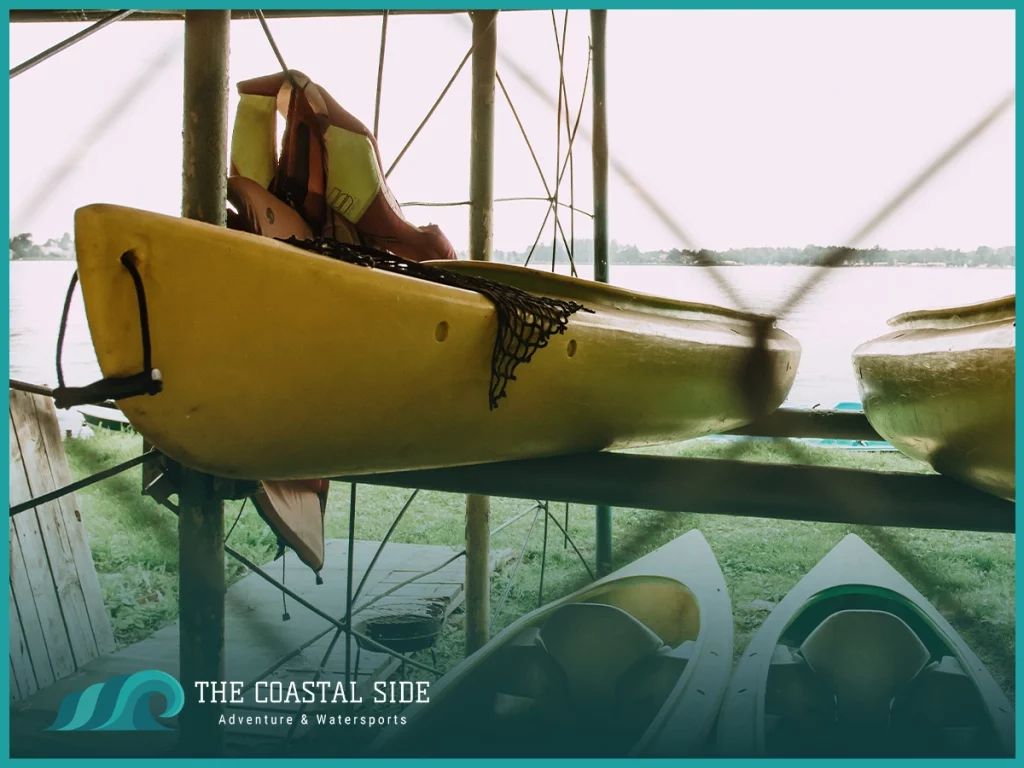
Indoor kayak storage has its perks, but it’s not always possible. For example, you may lack the room in your home or the funds to secure another kayak storage area.
In that case – or just because you’d rather not bother – it’s perfectly fine to store your kayak outdoors. But, if outdoors is the best kayak storage option for you, make sure you are able to safely secure your kayak. Here are some of the best ways to store your kayak outdoors.
Kayak Cover
One thing that you’ll need to do if you’re using outdoor kayak storage is to cover it well. You’ll want to avoid things like direct sunlight or wildlife deciding to poke at your belongings.
A kayak cover is a great way to do this. And if you don’t have a specialized kayak cover, use a tarp or some other thick covering.
Improper kayak storage can lead to hull deformation and other issues. Storing your kayak outdoors is fine, but never uncovered!
Beneath Awnings
If you can’t cover it for some reason, do your best to ensure that it’s under an awning. Storing your kayak beneath awnings can help to fend off some of the many elements.
For example, rain can sometimes sink in even with a heavy-duty cover. Beneath an awning, you’ll almost certainly avoid such an issue.
Putting a kayak storage rack beneath an awning is a great start. While there are more steps to proper storage, this is enough to effectively keep it safe instead of indoor kayak storage.
Avoid Elements!
Above all, you need to avoid the elements for your kayak. An inadequate covering is poor for this very reason. Make sure you’re using something UV resistant to stop sun bleaching.
You also will want to keep your kayak off the ground. Having your kayak wall mounted on the side of your home is a good way to do this. A wall mounted rack will avoid the damaging dirt.
If you can’t use a wall rack, try to store your kayak on a hard surface. Put a towel or blanket down to avoid scratching from concrete or stone.
Overhangs and Pavillions
Depending on what’s around your living community, you might struggle to find enough room on your property. Community pavilions or overhangs are a good way to store your kayaks.
One advantage of these sorts of storage areas is that you can lock up your belongings. Doing so prevents others from using them if you’re concerned someone may take your equipment.
You can also ensure that there’s enough room. For example, many pavilions might offer additional equipment and kayak storage at a small fee if you need more space.
Drydocking
The final suggestion on how to store your kayak is to simply drydock your kayak near your launching area. Unfortunately, this isn’t always possible, as it depends on where you’re launching your kayak from.
If you launch from a set and organized area that someone else owns, inquire about drydocking. Doing so will keep your kayak near the water without having to store it on your property.
These drydocks are good for two kayaks or more and can help provide raised stern support and a place to store other belongings, like life vests.
However, you might find a drydock rack to not have everything you need. A lack of storage cover is far from the only downside.
Still, they’re great in a pinch and something that can store multiple kayaks. Consider inquiring about a local drydock kayak rack if you’re struggling to find anywhere else to store yours.
Launching Out
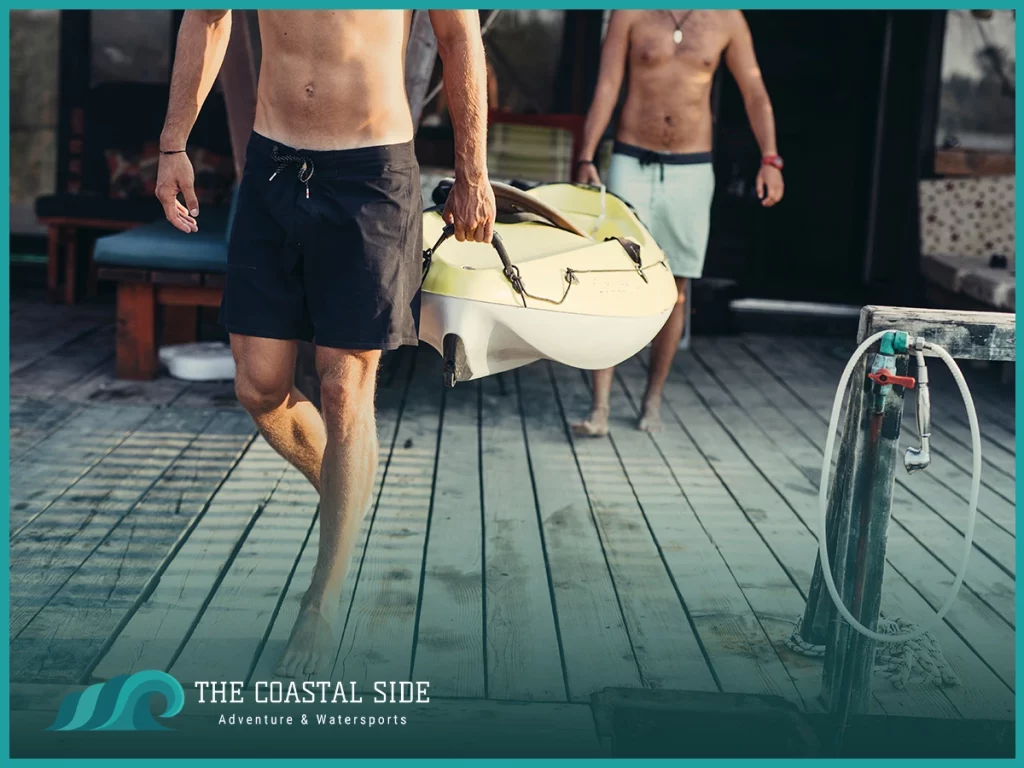
Kayaking as a sport grows more and more popular every year.
How ever you’re storing your kayak, keep it safe and leave it somewhere with enough space.

